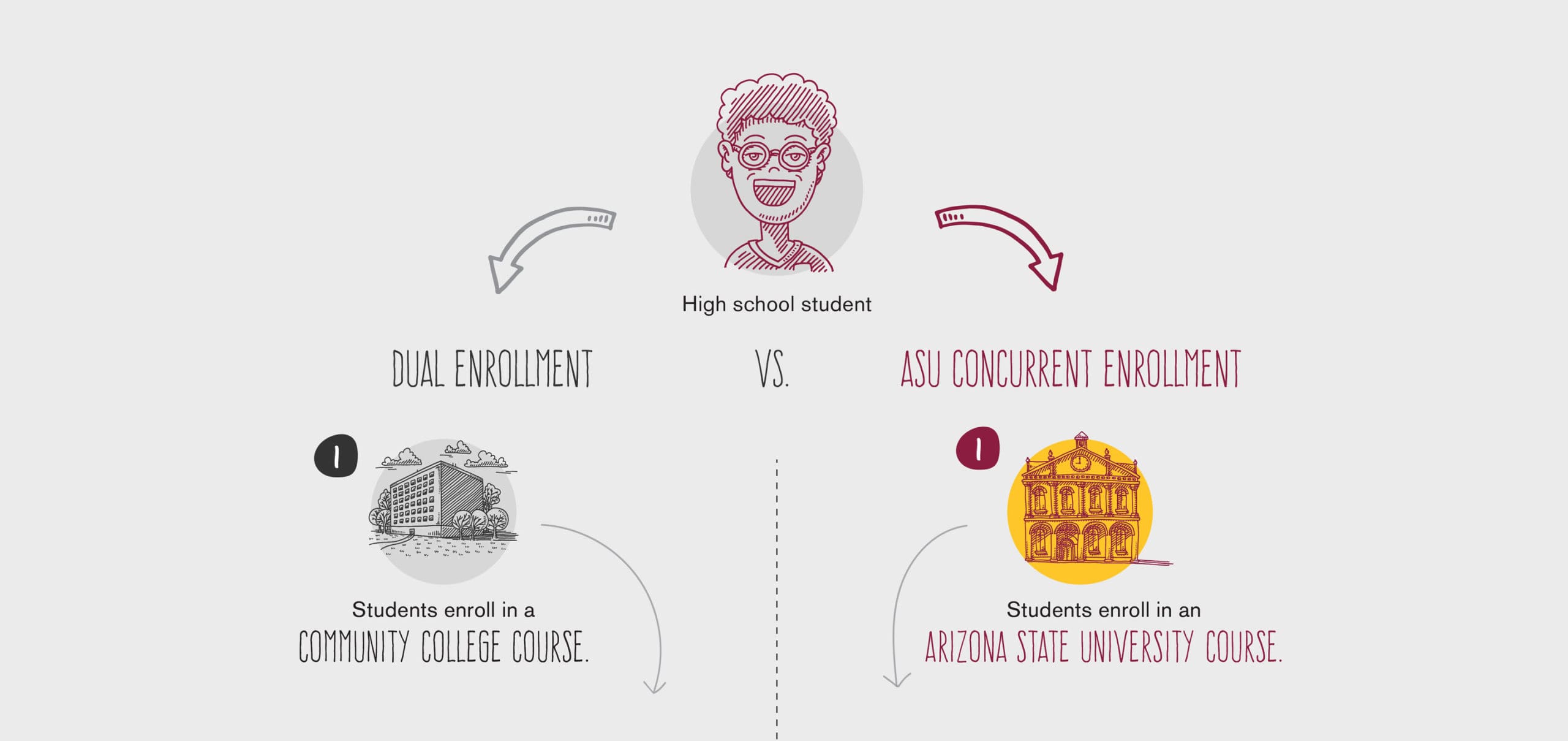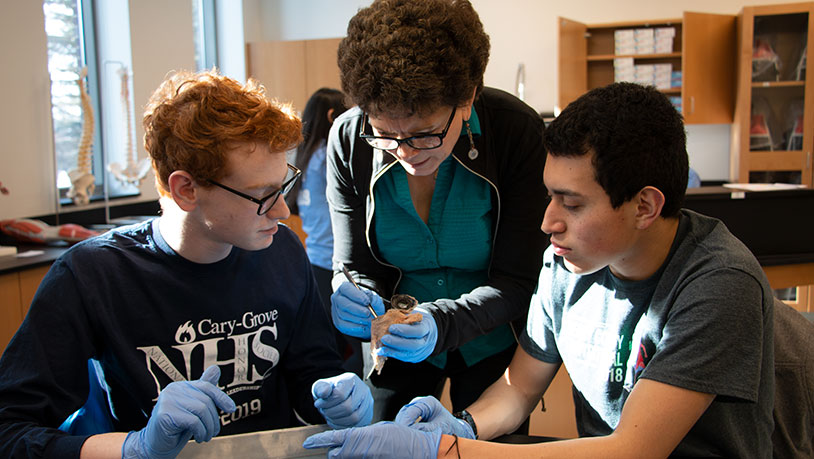dual credit classes meaning
An organization that guides students through the dual credit process of earning an accredited college degree primarily at home. AP courses are part of the College Board organization that requires students to take a rigorous test at the end of the course to potentially earn college credit.
Earning college credit while still in high school sounds like a dream for many students.
. Dual Credit Earning both high school and college credit at the same time for the same course of study. The safest dual credit. There are a number of benefits to dual-enrollment programs.
Students seeking credit through their HADV exam scores should note that individual college and universities not the College Board the AP Program or the high school grant course credit and placement. Students who register for Dual Credit courses receive a letter grade based on work. - Dual Credit courses can be offered at the high school campus during regular high school.
ENG 101 with a minimum grade of C or equivalent. What type of dual credit courses should you take. Like high school classes this usually involves maintaining good attendance completing assignments and taking a few tests.
Dual enrollment students only need to take and pass their courses to receive credit. Dual credit refers to students being enrolled and earning credit in two distinct academic programs or educational institutions at the same time. Career and Technical Education CTE is another form of dual or concurrent enrollment that students may want to explore.
Dual enrollment is when enrolled high school students take college classes that can count as both high school and college credits. Concurrent and dual enrollment students earn a college grade based on multiple and varied assessments throughout a course not just from one high-stakes test. The Texas Higher Education Coordinating Board THECB defines dual credit as a system under which an eligible.
General education is going to include your basic college courses that everyone needs to take regardless of majorEnglish history psychology humanities etc. If students pass their college classes they receive credit that may be applied toward their high school diploma and toward a college degree or certificate. Transfer Credit Transfer your credits to Texas public colleges and universities private institutions and some out-of-state colleges and universities.
Dual credit courses introduce you to the expected workload of a college class. In addition these programs introduce students to the rigors of college coursework early and recent studies have shown that students who participate in dual-enrollment programs are more likely go. Many state governments within the United States have recognized the benefit of dual enrollment and have consequently instructed their public universities to begin collaborating with local schools.
In these courses you can earn the high school credit needed to graduate along with a college credit to take with you. A dual credit course on the other hand is an official course at Loyola University Chicago. Yet a dual-enrollment experience may or may not allow students to earn dual credit and a dual-credit experience may.
A writing course refining components of ENG 101 studying information sources and research methods. Concurrent and dual enrollment courses are actual credit-bearing college courses. Youll also be able to get a head start on developing college study habits well before your freshman year.
Dual Credit refers to college level courses that allow students to earn both high school and college credit simultaneously. Dual enrollment programs tend to be popular at community colleges. High school student enrolls in college courses and receives credit for the courses from both the college and.
These classes can be transferred directly to colleges provided that the college accepts them. To earn the college credit students must pass the dual enrollment course with a grade of at least a C. Dual Credit classes are college classes offered at the high school.
Utilizing information technology for inquiry analysis and argumentation. Dual Credit courses include both academic courses as well as technical courses. Concurrent and dual enrollment students earn transcripted college credit at the time they successfully pass the course not retroactively.
Within those 30 dual credit credits your student will want to stick with general education courses. AP classes require passing a standardized test at the end of the year in order to be transferred to colleges. Dual credit programs allow secondary students to earn college credit for courses taken while they are in high school.
Simply put dual enrollment refers to students taking courses concurrently at two separate institutions while dual credit refers to students completing a single course to earn academic credits that are recognized by two or more institutions. In fact a 2010 study found that 15 of new. - Dual Credit refers to the process by which a high school student enrolls in a college course and receives simultaneous credit for the course from both the college and the high school.
Dual credit is a process by which a high school student enrolls in a college course and receives simultaneous academic credit for the course from both the college and the high school. Classes are taught by a high school instructor and are held at the students high school. Definition of Dual Credit.
The most popular option is dual enrollment which partners high schools with local community colleges. Accessing critically reading evaluating integrating and documenting primary and secondary sources. Credit is awarded when the student.
The Texas Higher Education Coordinating Board THECB defines dual credit as a system in which an eligible high school student enrolls in college course s and receives credit for the course s from both the college and high school. When high school students are looking to get a head start for college enrolling in a dual credit course is a great solution. Students who complete their course satisfactorily will earn high school and college credit for their work.
They give you an idea of what college-level courses will require of you such as project and exam expectations. Dual Credit allows high school students to simultaneously earn high school and college credit by completing courses at their high school. Dual Credit programs give these students the opportunity to receive both high school and college credits for pre-approved courses.
Dual credit courses may be taught on the high school campus by an approved instructor or on the college campus. Dual Credit programs are a collaborative partnership between Idahos collegesuniversities and high schools to deliver college-level courses to high school students.

Pros Cons Of Dual Enrollment Courses For Students

What S The Difference Between Dual Enrollment And Concurrent Enrollment Asu Prep Digital

10 Websites That Provide Free Online Courses Online College Classes Online College Online College Courses

Pin On Health And Physical Education American High School

Ap Vs Dual Enrollment Which Type Of College Course Is Better Tenney School

Pin On College Planning High School

What S The Difference Between Dual Enrollment And Concurrent Enrollment Asu Prep Digital

Dual Credit Houston Community College Hcc

Earning College Credits In High School The Sparrow S Home College Credit Homeschool High School High School Literature

What Is Dual Enrollment And How Much Does It Cost

Dual Credit For High School Students Mchenry County College

Golden Rules Of Accounting Accounting Accounting Basics Bookkeeping Business

Will Dual Enrollment Classes Help You Get Into College What To Consider

What Are Dual Credit Classes College Courses At A Low Cost

Dual Credit At Home Online College Classes College Credit Online College
